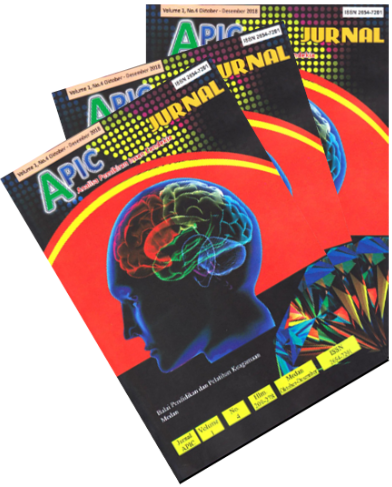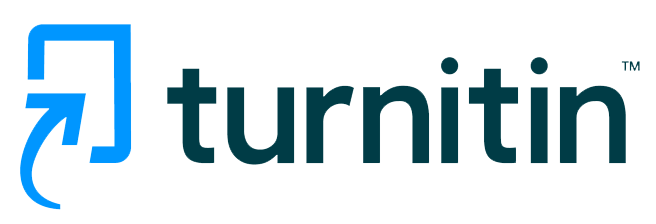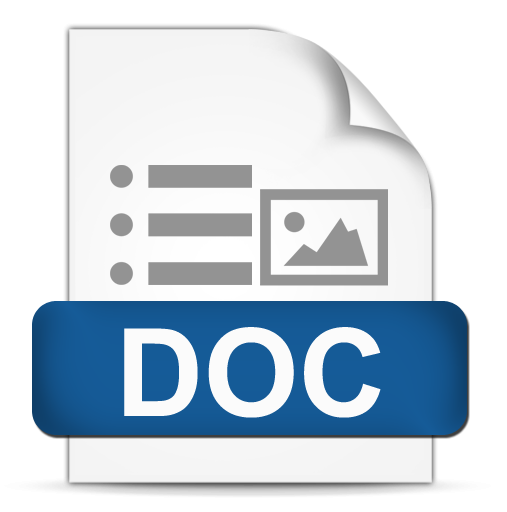SINKRONISASI PEMBELAJARAN PENDIDIKAN GEOGRAFI DALAM PENDIDIKAN VOKASIONAL DI KURIKULUM MERDEKA
DOI:
https://doi.org/10.54583/apic.vol7.no1.164Keywords:
Geography education, Vocational education, Independent Curriculum, GISAbstract
Vocational education has many forms and sectors, it can also cultivate diverse skills talents, inherit skills and promote employment and entrepreneurship. The position of geographic education in the field of remote sensing and Geographic Information Systems is vital in the study of geographic education which is used to analyze data on objects depicted in images that will be displayed in map form. Geography education is closely related to GIS technology and identifies characteristics that contribute to engaging students in the use of geospatial technology (GIS) in the classroom. The aim of this research is to explore the contribution of geography education in educating GIS at vocational high schools in Indonesia, especially in the Merdeka Curriculum. The result is that there are 3 skill competencies/expertise concentrations that are consistently based on the application of their knowledge in direct contact with geography education in the K13 curriculum and the Merdeka Curriculum, namely Geomatics Engineering, Geospatial Information Engineering and Forestry. Regardless of geography education and whether geography is natural knowledge or social knowledge, geography itself is a multidisciplinary science that is able to encourage and motivate students in the fields of career and science.
References
Bakri, Y Sugiarti and D Wahyudin (2019) Context integration GIS of education relevant in secondary school TVET. Annual Conference of Science and Technology Journal of Physics: Conference Series. 1375 (2019) 012081. doi:10.1088/1742-6596/1375/1/012081.
А. Demeuov , Z Tilekova, Y. Tokpanov, O. Hanchuk, N. Panteleeva, and I. Varfolomyeyeva. (2021). Use of GIS technology in geographical education. E3S Web of Conferences 166, 10032. https://doi.org/10.1051/e3sconf/202128011010.
Adam, E., Mutanga, O., & Rugege, D. (2010). Multispectral and hyperspectral remote sensing for identifcation and mapping of wetland vegetation: A review. Wetlands Ecology and Management, 18(3), 281–296. https://doi.org/10.1007/s11273-009-9169-z.
Altas, N. T. & Degirmenci, Y. (2015). Evaluation of using of GIS (Geographic Information System) in teaching of geography in higher education in terms of the student opinions. The Black Sea Journal of Social Siciences, 7(3), 1–14.
Alfieri, L., Salamon, P., Pappenberger, Wetterhall, F. (2012). Operational early warning systems for water-related hazards in Europe. Environmental Science and Policy 21, 35-49.
Andrzej Lisowski (2011) Geography and Social Sciences in Transdisciplinary Science. Mischellania Geographica. vol. 15/2011 pp. 9-40. DOI:10.2478/v10288-012-0001-x.
Arkadiusz Nowak, Sylwia Nowak (2022) Geobotany Revisited – A Glimpse at the Blooming and Infuential Discipline With Its Strong Roots in the Beauty of Nature and the Pragmatic Need of Its Protection. Acta Societatis Botanicorum Poloniae. Vol 91. Article 912.
Artvinli, E. (2010). The contribution of geographic information systems (GIS) to geography education and secondary school students’ attitudes related to GIS. Educational Sciences: Theory & Practice, 10(3), 1255–1292.
Artur Krawczyk (2022) Proposal of Redefinition of the Terms Geomatics and Geoinformatics on the Basis of Terminological Postulates. ISPRS Int. J. Geo-Inf. 11, 557. https://doi.org/10.3390/ijgi11110557.
Aydin, F. & Kilcan, B. (2016, June 2–4). Cografya dersinde cografi bilgi sistemleri kullanimina yonelik ogretmen gorusleri. ERPA International Congresses on Education, Sarajevo, Bosnia and Herzegovina.
Baker, T. R. & White, S. H. (2003). The effects of GIS on students’ attitudes, self-efficacy and achievement in middle school science classroom. Journal of Geography, 102(6), 243–254.
Bauer, B.O. 2004. Geomorphology. In: A.S. Goudie (ed.), Encyclopedia of Geomorphology, Routledge, London, pp. 428-435.
Beamish, A., Raynolds, M. K., Epstein, H., Frost, G. V., Macander, M. J., Bergstedt, H., Bartsch, A., Kruse, S., Miles, V., Tanis, C. M., Heim, B., Fuchsa, M., Chabrillat, S., Shevtsova, J., Verdonen, M., & Wagner, J. (2020). Recent trends and remaining challenges for optical remote sensing of Arctic tundra vegetation: A review and outlook. Remote Sensing of Environment, 246(1), Article 111872. https://doi.org/10.1016/j.rse.2020.111872.
Bodzin, A. M. (2011). The implementation of a geospatial information technology (GIT)-supported land use change curriculum with urban middle school learners to promote spatial thinking. Journal of Research in Science Teaching, 48(3), 281–300.
Crawford, T. W. (2005) Spatial fluctuations as signatures of self-organization: A complex systems approach to landscape dynamics in Rondonia, Brazil. Environmental and Planning B Planning and Design, Vol. 32, 857–875.
Craghan, M. (2004) The study of human action in the physical environment. Physical Geography, Vol. 25, 251–268.
Cowell, C. M. and Parker, A. J. (2004) Biogeography in the Annals. Annals of the Association of American Geographers, Vol. 94, 256–268.
Dar Roberts, Eliza Bradley, Keely Roth, Ted Eckmann, Christopher Still (2010) Linking Physical Geography Education and Research Through the Development of an Environmental Sensing Network and Project Based Learning. Curriculum & Instruction. p 262-274.
Danoedoro P (2008) Posisi Penginderaan Jauh dalam Perkembangan Ilmu Geografi. Proceeding Filsafat Sains Geografi Yogyakarta 12 Juli 2008 Program Studi Pembangunan Wilayah Fakultas Geografi Universitas Gadjah Mada, 182-189.
DGfG – Deutsche Gesellschaft fur Geographie (Hrsg.)6 2010. Bildungsstandards im Fach Geographie fur den Mittleren Schulabschluss – mit Aufgabenbeispielen. Berlin: Selbstverlag Deutsche Gesellschaft für Geographie.
Degirmenci, Y. & Altas, N. T. (2016). Academic achievement effect in geography course of GIS (geographic informatıon systems) assisted instruction in higher education. Erzincan University Journal of Social Sciences Institute, 9(2), 153–166.
Downs R M (2016) Bringing geography back to life: The role of the geospatial revolution in the US school system. Geography 101.
Favier, T. T. & Schee, J. A. (2012). Exploring the characteristics of an optimal design for inquiry-based geography education with geographic information systems. Computers & Education, 58(1), 666–677.
Grun, A. (2008). Geomatic Engineering and Environmental Engineering. Geomatics Information Magazine (GIM). Vol. 12, pp 30-33.
Goudie, A.S. (2002). Aesthetics and relevance in geomorphological outreach. Geomorphology 47, 245-249.
GoodChild, M. F., & Kemp K K (1990) NCGIA Core Curriculum in GIS St. Barbar. CA, Natl. Cent. Geogr. Inf. Anal. Univ. California
Haggett, Peter. 2001. Geography, A Global Synthesis. London: Prentice Hall.
Hartwig Haubrich (2007). Geography Education For Sustainable Development. Geographical Views on Education for Sustainable Development Proceedings Lucerne-Symposium, Switzerland. Vol 42, Hal 27-38.
Huang, H., Li, Z., Gong, P., Cheng, X., Clinton, N., Cao, C., Ni, W., & Wang, L. (2011). Automated methods for measuring DBH and tree heights with a commercial scanning lidar. Photogrammetric Engineering and Remote Sensing, 77(3), 219–227. https://doi.org/10.14358/PERS.77.3.219.
I Kholoshyn , T Nazarenko , O Bondarenko, O Hanchuk and I Varfolomyeyeva (2021) The application of geographic information systems in schools around the world: a retrospective analysis. Journal of Physics: Conference Series. 1840 (2021) 012017 doi:10.1088/1742-6596/1840/1/012017.
J. Anthony Stallins. (2014) The Biogeography of Geographer: a Content Visualization of Journal Publication. Physical Geography, 28, 3, pp. 261-275.
Jia, D., (2013). Analysis of Personnel Training and Demand Forecast for Surveying, Mapping and Geoinformation of Domestic Colleges and Universities. Bull surv map (7), 112-114.
J.M. Garcia-Ruiz.(2015). Why Geomorfology is a Global Science. CIG 41 (1), p. 87-105, ISSN 0211-6820.
J. Markowitsch. (2017). The changing nature and role of vocational education and training in Europe Volume 1: conceptions of vocational education and training: an analytical framework. Luxembourg: Publications Office of the European Union.
Junnilainen E. A. (2006). Initiative for International Master Program in Photogrammetry at the Helsinki University of Technology. Shaping the change. XXIII FIG Congress. Munich, Germany.
Kattenborn, T., & Schmidtlein, S. (2019). Radiative transfer modelling reveals why canopy refectance follows function. Scientifc Reports, 9(1), Article 6541. https://doi.org/10.1038/s41598-019-43011-1.
Kerski J J, Demirci A and Milson A J (2013) The Global Landscape of GIS in Secondary Education The Global Landscape of GIS in Secondary Education J. Geog. 112:6 232–47.
Kent, M. (2007) Biogeography and landscape ecology. Progress in Physical Geography, Vol. 31, 345–355.
Kinniburgh, J. (2010). A constructivist approach to using GIS in the New Zealand classroom. New Zealand Geographer, 66, 74–84.
Korhonen, L., Korpela, I., Heiskanen, J., & Maltamo, M. (2011). Airborne discrete-return LIDAR data in the estimation of vertical canopy cover, angular canopy closure and leaf area index. Remote Sensing of Environment, 115(4), 1065–1080. https://doi.org/10.1016/j.rse.2010.12.011.
Laima Railienơ (2003) How Geography and Natural Science Subjects come into Contact. Journal of Baltic Science Education, No. 2 (4), 2003-10-30; pp. 62-69.
Lay, J. G., Chen, Y. W., and Chi, Y. L. (2013). GIS adoption among senior high school geography teachers in Taiwan. Journal of Geography, 112(3), 120-130.
Lee, J. & Bednarz, R. (2009). Effect of GIS learning on spatial thinking. Journal of Geography in Higher Education, 33(2), 183–198.
Linn, S., Kerski, J. & Wither, S. (2005). Development of evaluation tools for GIS: how does GIS affect student learning? International Research in Geographical and Environmental Education, 14(3), 217–224.
Little, Angela W and Green, Andy (2009), Successful globalisation, education and s ustainable development, International Journal of Educational Development, Volume 29, Issue 2, March 2009, p 166-174.
L. Soemantri dan Nandi. (2016). Learning Methods of Remote Sensing In the 2013 Curriculum of Secondary School. International Conference of Indonesian Society for Remote Sensing (ICOIRS) IOP Conf. Series: Earth and Environmental Science. Vol. 47, 012045 doi:10.1088/1755-1315/47/1/012045.
Longley, P.; Goodchild, M.; Maguire, D.; Rhind, D. (2005)Geographic Information Systems and Science, 2nd ed.; John Wiley & Sons: Hoboken, NJ, USA.
Lave R, Wilson MW, Barron ES et al (2014) Intervention: critical physical geography. Can Geogra Ge´ogr Can 58(1):1–10.
Mario A. Gomarasca (2010) Basics of geomatics. Appl Geomat. 2:137–146. DOI 10.1007/s12518-010-0029-6.
McGlynn T. (2010): Effects of Biogeography on Community Diversity. Nature Education Knowledge 1: 32.
M Abdullah Al-Nofli (2010). Students' Perceptions about Geography: A Study of Basic Education School Students in Oman. European Journal of Social Sciences Vol. 16 No.1, Hal 11-21.
Osman Çepni (2013). The Use of Geographic Information Systems (GIS) in Geography Teaching. World Applied Sciences Journal 25 (12): 1684-1689. DOI: 10.5829/idosi.wasj.2013.25.12.1452.
O. Mazbayev, L. Alieva, A. Demeuov, (2020). Problematic issues of geographical education in Kazakhstan. E3S Web of Conferences 166, 10032. https://DOI.org 10.1051/e3scof/202016610032.
Su, Y., Guo, Q., Fry, D. L., Collins, B. M., Kelly, M., Flanagan, J. P., & Battles, J. J. (2016). A vegetation mapping strategy for conifer forests by combining airborne LiDAR data and aerial imagery. Canadian Journal of Remote Sensing, 42(1), 1–15. https://doi.org/10.1080/07038992.2016.1131114.
Subash Ghimire (2011). The Role of Geomatics Engineering Education for National Development. Proceedings of the 2011 International Symposium on Advanced Engineering, 1-7.
Tang, G., Dong, Y., Jia, Y., Gao, Y., (2008). Geo-Spatial Information Technology Education in China, Present and Future. ISPRS, Int. Arch. Photogramm. Remote Sens. Spat. Inf. Sci. Vol 37(B6a), 5-10.
Trautmann, N. M., and MaKinster, J. G. (2010). Flexibly adaptive professional development in support of teaching science with geospatial technology. Journal of Science Teacher Education, 21(3), 351–370.
Ugurlu, N. B. (2008). A new example for the use of ınformation technologies in education: geographic information systems. Ankara University, Journal of Faculty of Educational Sciences, 41(2), 81–95.
Y. Degirmenci (2018). Use of geographic information systems (GIS) in geography lessons according to teachers’ opinion. World Journal on Educational Technology. Vol 10, Issue 3, 186-196.
Zaman, S., Coskun, O., Sever, R., Turkez, K. & Zaman, N. (2009). The effects of geographical ınformation systems use on student achievement in geography education. 1st International Conference on Foreign Language Teaching and Applied Linguistics (FLTAL’11), Sarajevo, Bosnia and Herzegovina.







